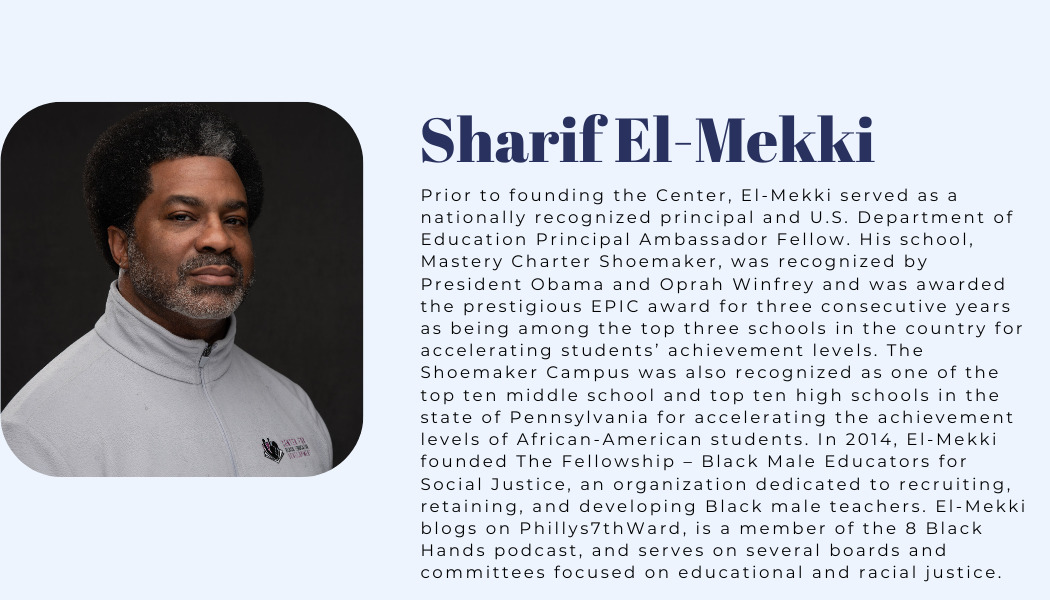
An engaged student is a successful student. There is no debating that fact.
Research from Gallup as recently as a few years ago found that when a student is engaged, hopeful, and interested in their education, they thrive academically.
The evidence is similarly clear that student engagement and learning flourish with greater exposure to authentic learning experiences that blur the line between classroom and community. When students have choice, voice, and agency in learning that is real-world and future-connected, they persist at higher rates and simply do better.
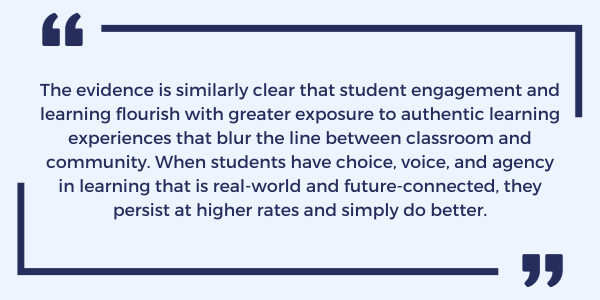
Internships and apprenticeships are precisely the kind of authentic opportunities that enable students to pursue learning trajectories that are of high interest to them, connect them to a future of meaningful work, and build their agency as individuals on the cusp of adulthood. This practical exposure allows students to develop a deep understanding of their chosen field, honing their skills and knowledge while simultaneously building a professional network.
Vitally, they also help students develop the soft skills necessary to thrive in the workforce. These include the kinds of personal capacities that many refer to as 21st Century Skills, but in reality are simply the hallmarks of a well-rounded education, such as work ethic, problem-solving abilities, adaptability, and time management.

Most importantly, apprenticeship programs offer these professional opportunities without debt and instead often create a steady income for participating students. This is particularly significant for students of color. Black and brown students are disproportionately impacted by student loan debt. Black graduates owe on average $25,000 more than their White peers, some 188% more on average four years after graduation, according to the Education Data Initiative. Even with that degree, and all that debt, Black graduates earn 67 cents on the dollar compared to white graduates.
At the same time, a Mathematica Policy Research study found that apprenticeship “participants who completed a Registered Apprenticeship program earned, on average, over $240,000 more throughout their careers compared to nonparticipants.” There is an obvious and clear value proposition given the comparatively high levels of debt and lower earnings that Black graduates face on average.
The value proposition extends to the business community too. Such programs represent a cost-effective mechanism for employers to develop pipelines of skilled workers. Apprentices often start out making roughly half the wages of a traditional full-time employee as they work part time and learn part time. But they learn quickly: by the second year of an apprenticeship, these workers in training are already reaching 70-76% of the productivity as a fully-trained, traditional full-time employee according to questionnaires by CareerWise. A classic win-win if there was one.
Unfortunately, such programs and on-ramps to the world of work are in precious short supply–
According to the US Department of Labor, there are some 27,000 registered apprenticeship programs nationwide with nearly 600,000 young people participating in these programs. Yet that’s just a fraction of the young people that could or otherwise would enroll if they had ready access to such programs. In a country with well over 15 million high school students, there’s ample room for expansion.
In other nations like Singapore, Switzerland, and Germany, apprenticeships and internships are key features of the educational experience of the majority of public school students and therefore workers. In the U.S. it’s more bug than feature. Apprenticeships represent a remarkably small subset of experiences for U.S. workers, accounting for just 0.3% of the workforce in 2019.

So why doesn’t the U.S. have a robust work-based learning system? What’s stopping apprenticeships and internships from flourishing?
For starters: historical racism and outdated thinking about the role and value of career-connected work versus a traditional academic school experience.
The historical role of tracking and its racist application with Black and brown students weighs heavily in this area. The vocational education system generally and apprenticeships particularly have often been stigmatized as serving struggling students who couldn’t succeed in a college or university.
“Struggling reader? Not excelling in Algebra? Send him to shop class, teach him to weld!” or so the old thinking went. Never mind that skilled tradespersons have always needed rock solid mathematical and literacy skills. That outdated thinking simply no longer squares with the reality that the dynamic nature of the modern economy means that students who have work-based learning experience have a leg up–no matter if they intend on being a welder, an engineer, or a medical professional.
The world of work has been transformed in recent years and that transformation is only accelerating. We’re not just seeing shifts in what kinds of jobs students will pursue, but changes in the skills needed to do even existing jobs. Since just 2016, some 37% of the top 20 skills requested for the average U.S. job has changed, according to a joining Boston Consulting Group-Burning Glass Institute analysis.
Our students need more exposure to state-of-the-industry learning to keep pace with that rapid evolution. Students in Switzerland and Singapore get exactly that: Learning by using the actual technology, equipment, software, business processes, and ways of work on which the industry operates. And it’s not just the traditional building trades or “voc-ed” careers. It’s all jobs in fields across the employment spectrum, including in professions that require an academic college experience.
But in the U.S. it looks more like a narrow career band of potential careers, learning on 30-year-old hardware and with an arms-length distance from the actual work taking place. Here, too many students are missing out on the engaging and empowering potential of career-connected work and apprenticeships.
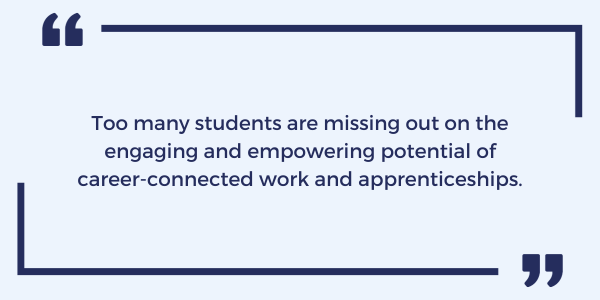
We can and should do better. We have models here in the U.S. that are doing amazing things by their students–many of them Black, brown, and low-income, including the organization I founded.
The Center for Black Educator Development: Preparing and Inspiring the Next Generation of Black Teachers
The Center for Black Educator Development leverages career-connected learning to get more Black high schoolers and college students on a path to becoming teachers.
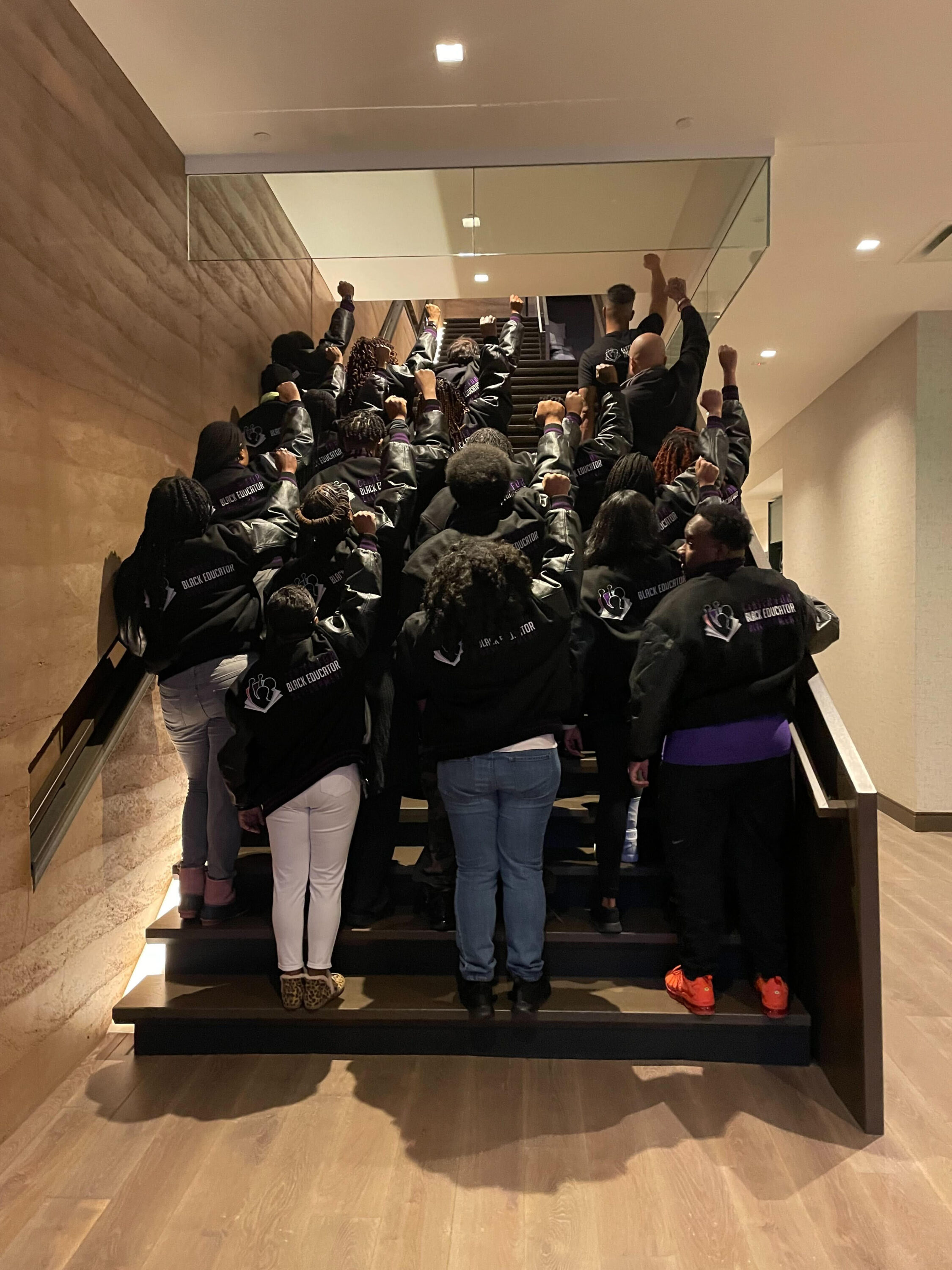
Our Freedom Schools Literacy Academy is year-round with after school and five weeks of summer programming. The Academy provides Black high school students (junior servant leaders) and college students (servant leader apprentices) interested in teaching careers with mentorship, professional development, and teaching experiences.
Our Teaching Academy is a year-round high school course for students interested in teaching based on the CBED LeCount Catto Curriculum that uses Black pedagogical frameworks and a historical lens, monthly seminars geared toward educational equity, and partnerships with institutions of higher education. Academy graduates are eligible for dual enrollment/Career & Technical Education opportunities.
Our programming is centered on a principle of servant leadership that emphasizes scholarship, character and the fundamental values of a liberatory education for Black and brown students, building an ethos of care, collaboration, and consideration that empowers program participants. The program is actively advancing 21st Century or “soft” and absolutely critical skills, if just by a different name.
CareerWise: A Colorado Success Story
There are other models too. CareerWise is a great example. Careerwise was created in Colorado to address a shortage of skilled workers while bridging the gap in career skills and training for students. The initiative offers valuable opportunities for students across the state and has expanded nationwide. Pathways include advanced manufacturing, education, financial services, healthcare, and IT. A majority of Careerwise Colorado participants are students of color and Black and Hispanic students are enrolled at higher rates in the program than enrolled in schools statewide.
According to a report from Harvard Business School, “64% of CareerWise students achieve the program’s stated goal of serving as an ‘Options Multiplier’— they transition on to postsecondary education, employment, or both.” Nearly 4 in 10 apprentices in the 2017-2018 cohort either completed the full three-year program or accepted a full-time employment offer with their apprenticeship site, and the vast majority of those who did not complete the program still went on to pursue two-year, four-year, or technical degrees.
YouthBuild: From East Harlem to a Global Presence
East Harlem was the birthplace of YouthBuild in 1979. In the 40+ years since its founding it has expanded to 276 programs worldwide serving 180,000 students across those four decades. Assisted by a direct line of federal funding, YouthBuild provides education, job training, and leadership development opportunities to young people, particularly those who have faced barriers to education and employment.
The program’s primary focus is on youth who have dropped out of high school, come from low-income backgrounds, or have been involved with the justice system. In 2020, YouthBuild served approximately 7,000 students nationwide: 85% were economically disadvantaged, 46% were Black or African American, and 31% were Hispanic or Latino.
The program couples academic learning and real-world job training. Participants receive hands-on vocational training in various trades such as construction, healthcare, information technology, hospitality, and more. These skills are intended to make them job-ready and help them pursue careers in their chosen fields. At the same time, participants engage in robust community service and leadership development activities, rounding out their educational and social development. YouthBuild programs provide wraparound services like counseling, mentoring, job placement, and continuing education connections.
New York City: Making Moves in Apprenticeships and Internships
As a result of this high-engagement and support model of career-connected education, YouthBuild has had statistically significant effects on student outcomes, including: high school equivalency credential attainment, vocational school enrollment, postsecondary course enrollment, and average earnings. Of the students served in 2020, 79% obtained a high school diploma or equivalent credential and 43% went on to postsecondary education or jobs.
Major jurisdictions are paying attention to the issue and taking action, including the City of New York. Launched just last year, the Career Readiness and Modern Youth Apprenticeship Program (CRMYA) of New York City will connect 3,000 students in more than 50 schools with multi-year apprenticeships. By 2030, Mayor Adams hopes to connect 30,000 New Yorkers to apprenticeships. The program aims to connect students with New York City companies in finance, technology, and business operations, where they will earn between $15 and $25/hour. CRMYA is a critical component of Student Pathways – a broader expansion of career-connected learning opportunities for New York City public school students.
Toward an Empowered Education
The abundant evidence and plethora of successful examples both domestically and abroad demonstrate that career-connected learning, apprenticeships, and internships are difference-makers for students, employers, and the economy as a whole. But even more than that, such models provide students with agency and choice that is sorely lacking in our stilted and rigid traditional public education system. If we are to be committed to equity, student empowerment, and the wellbeing of our youth, both today and tomorrow, we should embrace the kinds of educational pathways and environments that bolster their sense of self worth and capacity.
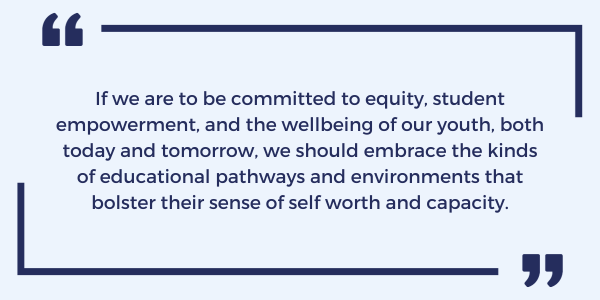
The solutions are right out there, we just have to see them in front of us.
***********
For further reading:
Dr. Noel S. Anderson and Dr. Lisette Nieves wrote an insightful and useful book, Working to Learn: Disrupting the Divide Between College and Career Pathways for Young People, a must-read for every single school district leader and policy maker involved in education and/or workforce development.